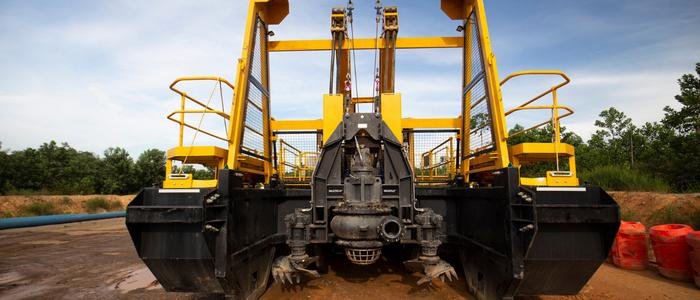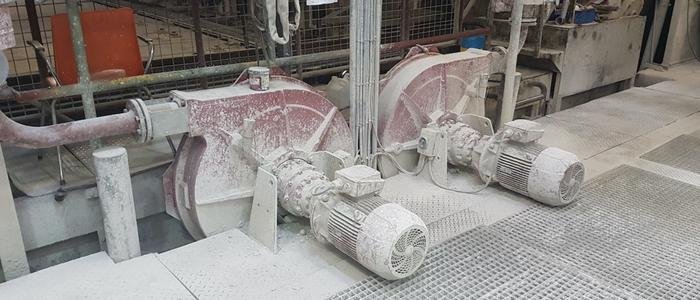
An abrasive slurry combines abrasive material (for example, silicon carbide and boron carbide) in water or oil. Vibration can cause contact on the surface between the tool and the workpiece, abrasive particles in the slurry surface of the workpiece, resulting in material removal through micro-chipping.
Among several other things, applications of the Abrasive Slurry Pump
Bentonite Slurry Pumping in Horizontal Applications for Utilities
A Manufacturer develops equipment to bore horizontal holes for service utilities beneath roadways, trains, rivers, and canals. In this laborious process, a jet flush of a freshwater stabilizing slurry, including Bentonite, is used. The molecules in the slurry are 95% larger than 90 microns in size. Abrasive pumps were chosen for their ability to pump abrasive materials and their smooth delivery. Pumps would barely last a few hours in these conditions.
Pumping Adhesives for Industrial and Commercial Use
Adhesive pumping is a common problem in various industrial and commercial applications. One example is adding removable adhesives to many labels, stamps, and other products that stick when you lick them. Initially, an air-operated diaphragm pump was used, but it proved too small and unstable to measure adhesive onto the paper accurately during production. The abrasive pump features a metered bond with excellent repeatability and dependability. The abrasive pump head is processed even more smoothly with the standard “high flow” fluid end design.
Alumina Slurry and Deionized Water Pumping in a Porcelain Plant
This application requires an abrasive pump to transfer Alumina Slurry and Deionized Water into a Spray Dryer. The slurry contains 70% solids (80-90 percent Alumina). An air-operated diaphragm pump was attempted but failed. Unwanted was the uneven flow (typical of AOD pumps) and pressure changes induced by the air compressor kicking in and out. Another difficulty was stopping. The solution was an abrasive pump with ceramic valves and seats. The abrasive pump is coupled and controlled at the dryer discharge by a variable speed drive and temperature-sensitive control. When the temperature rises, the abrasive pumps increase their output to create more material to cool the drier. If the temperature drops, the abrasive pump slows down.
Pumping Concrete
The good casing pipe must first be removed as part of the process. Then, on-site cement is manufactured and pumped down the hole to fill specific details that extract oil and natural gas. A conventional hole plug may need 60 to 100 bags of cement.

Using an abrasive pump and a small cement mixer removes the need for a large concrete truck. The user can use a conventional pick-up truck with a hydraulic lift to lower the D40 abrasive pump skid to the ground, then mix the cement (approximately 8-10 Ibs. to l gal. water or 1 kg to 1 liter) in a plastic tank with a 1-2 foot suction head. A hydraulic motor drives the D40 abrasive pump, ensuring consistent flow down the well. One D40 abrasive pump pumped almost 5000 bags of cement without being serviced for six months.
Pumping Glass Slurry
An electronic glass frit/powders producer pumps lead ground glass slurry to a nitrogen-cooled catalyst tank. The cooled product is shaped into a 1/8″ diameter by 3/8″ length tube. This is available as raw glass. Eventually, the plain glass is melted and fused around diodes and other electronic components. The difficulty was that the rotors and stators wore down quickly (60 hours). Due to its seamless construction, the abrasive duty pump with ceramic valves and seats provided a practical option. By lowering downtime and improving pressure capabilities, Viox increased production and quality.
Pumping Iron Oxide Slurry
A magnet factory used progressive cavity pumps to process iron oxide slurry (heavy, abrasive, and with the viscosity of a thick milkshake) in magnet production. It was tough to pump the slurry. The progressive cavity pumps needed a longer service life (sometimes less than a week).
The expenses of repairing worn stators, rotors, and seals, as well as lost production time and person-hours spent on repairs, were rising.
Pumping Resin in Paper Production

The paper pulp used to make toilet paper (or other tissue paper) must be dried before it can be wound onto rolls. The tissue is pushed through a spinning drum dryer (Yankee Dryer) or sequence of driers as it proceeds through the production process. An abrasive pump sprays a PVA resin compound on the drier to prevent the abrasive pump was chosen because it could easily handle the resin. In contrast, other pumps (gear and lobe) had seals destroyed and air-operated diaphragms pulsed too much.
Pumping Water for Pipeline Pressure Testing
This application necessitates water pumping to detect breaks in pipelines for city water supply lines. Because earlier pumps required ongoing maintenance, the abrasive pump was chosen. The water supplied is typically drawn from nearby streams, rivers, and lakes, which can be slightly abrasive and cause early failure of cups, packings, and seals in other than abrasive pumps. Another incentive to use the abrasive pump is that the M03 abrasive pump may be directly connected to a gas engine, resulting in a tiny, compact, portable machine.
Pumping Coolant in Machining Operations
Coolant pumping is widely used for abrasive pumps, including any process that cuts, mills, drills, or grinds metal. Pressures might be low, high, or extremely high – this abrasive pump can produce a smooth low pulse at almost any stress. Metal particles can still pass past filtering devices and reach the coolant pumps. The l abrasive pump’s sealless design allows coolant particles to pass through with minimum wear on the abrasive pump heads. These metal particles were constantly destroying previously used gear pumps and piston pumps.
A pumping application owner needs to understand that abrasiveness and corrosiveness go hand in hand. Water alone is corrosive. When exposed to a corrosive environment, most metals acquire a coating of protective oxide on their surface. When abrasive particles are introduced into the liquid, they tend to remove the “protective layer” of oxidation, exposing the bare metal to the corrosive and abrasive liquid. This interaction must be studied to select the best material and hydraulic appropriateness for the life of the pumping unit.
Other applications include:
- Agriculture
- Food Industry
- Car Wash
- Chip Board Manufacturing
- Chemical & Industrial Processing
- Cleaning and Washing
- Food Process / In-Plant Cleaning
- Lawn Care
- Machine Tools
- Metering Pumps
- Mining, Tunneling & Quarrying
- Dust Suppression
- Oil & Gas Production
Wear Due to Abrasive
Slurries, by design, contain small particles. Pumping abrasive slurry can be difficult since it can quickly wear out pump and pipeline components, especially if utilized incorrectly. The pump impeller, wear rings, shaft sleeves, mechanical seal faces, lip seals, and the volute are the most typically worn parts by abrasive slurry.
You can do certain things while pumping slurries to help your pump and pipelines last longer. Run the pump as gently as possible to avoid slurry settling at the bottom of the tubes. Slowing down the slurry flow reduces pump part degradation; nevertheless, the slurry must be turbulent enough to prevent settling and clogging of your lines.
Furthermore, keeping the pump’s discharge pressure as low as possible is advisable, as a more significant flow rate increases the chance of pump wear.
The pump should run at the lowest RPM possible while maintaining a high enough flow rate to prevent material from settling at the pipeline’s bottom. If you know enough about your project, you can construct a pump curve that will inform you which pump to use and how much power to use for optimal pumping. This technique removes some guesswork and can quickly get you on the right track to selecting the right pump for your job.
A Supply Unit for Abrasive Slurry
As one of the important components of the abrasive slurry circulation system, an abrasive slurry pump is used to flow the abrasive slurry fluid. The abrasive slurry solution is made of abrasive particles mixed with water, which serves as a cooling system for the tool and workpiece.

The flow rate of abrasive slurry is controlled by varying the control valve attached to the mill module. The central control unit controls the abrasive slurry pump’s power supply. The performance of machining processes is highly influenced by the ultrasonic machine’s slurry concentration, flow rate, and cooling system.
Higher abrasive slurry concentration may boost the material removal rate. However, a lower concentration is desirable for slurry pump performance.
Boron carbide (B4C), one of the most challenging compounds that may be employed as abrasives for USM processes, is the most often utilized abrasive. The hardness, size, and kind of workpiece materials are used to select abrasive particles for USM. Aluminum oxide (Al2O3), silicon carbide (SiC), boron silicarbide, and diamond are other abrasives. Water is a typical liquid media used to create an abrasive slurry. Other liquids that can be used include oils, benzene, and glycerol.
If you have questions about the abrasive slurry pump, you can contact us anytime or call +86 18633935649 for faster transactions, and our senior engineers will answer you at any time.


